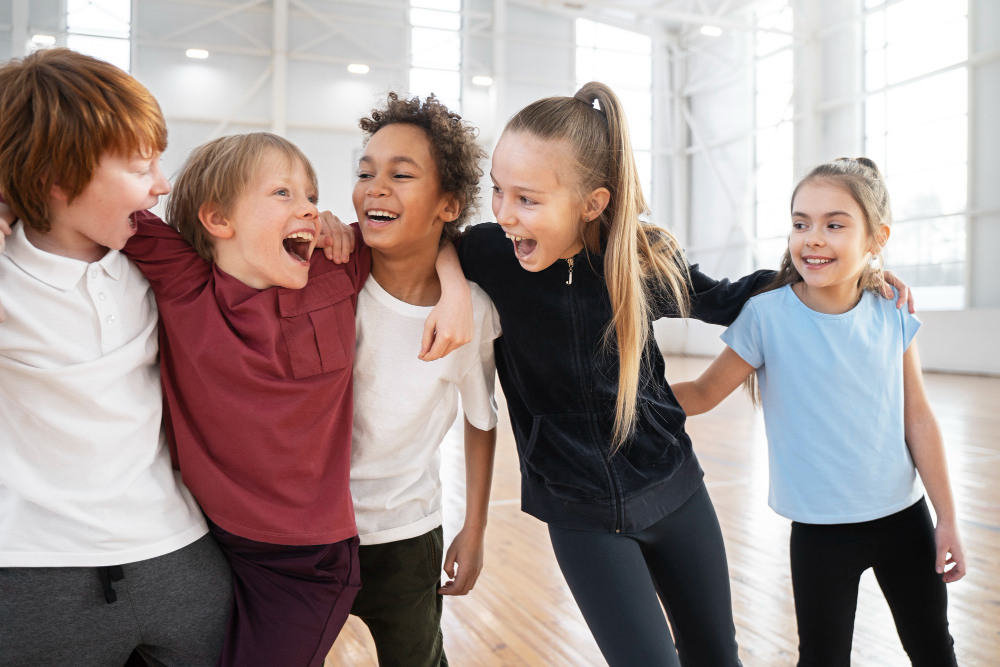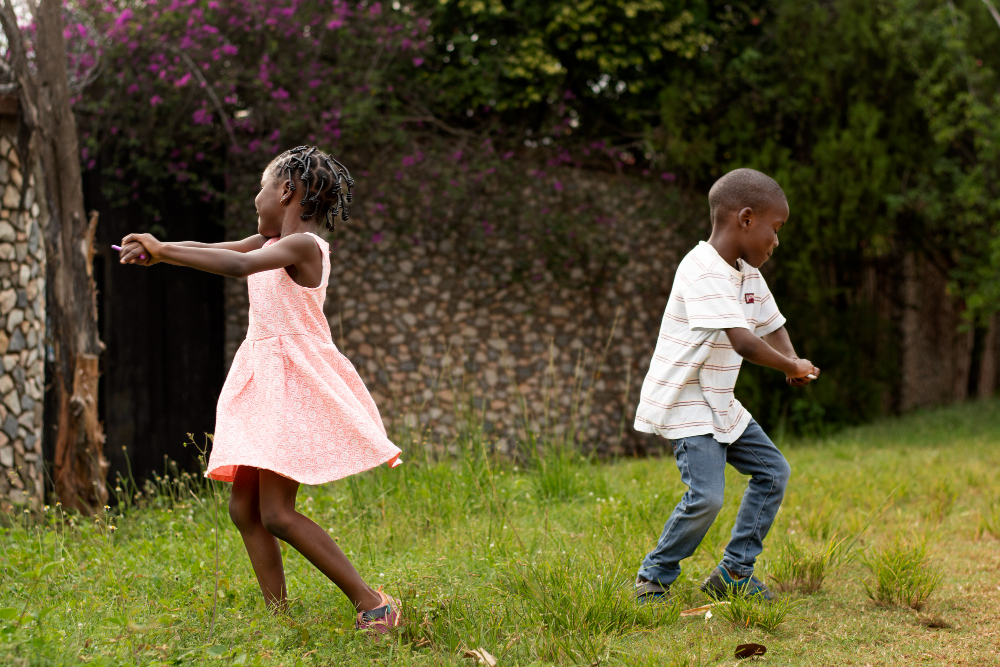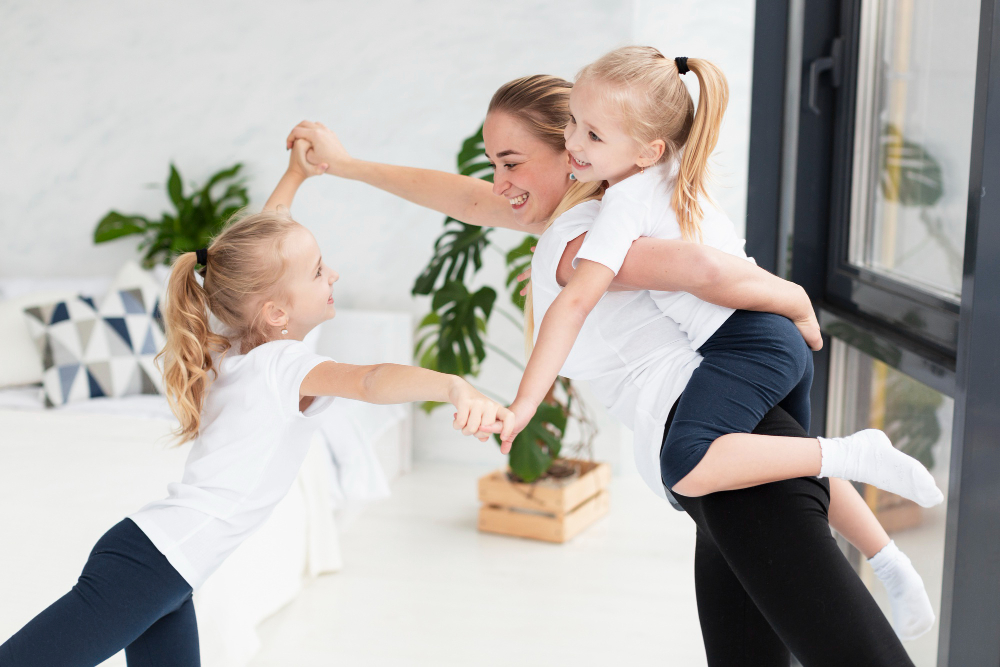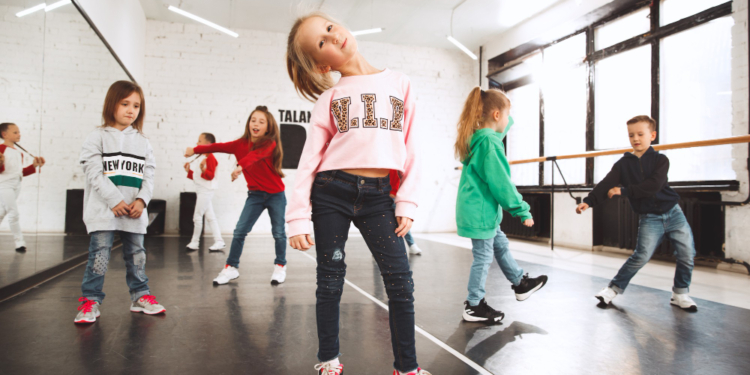In a world buzzing with screens and gadgets, the timeless art of dance emerges as a beacon for fostering children’s well-being. Whether it’s an impromptu dance party at home or structured dance classes, the benefits are as diverse as the moves. In this article, we unravel the tapestry of dance and its transformative effects on kids, delving into both the obvious and the less apparent advantages.
Health Benefits of Dance For Kids
1. Improves Physical Health
Children who exercise have a more positive attitude in life. They have higher self-esteem and feel more energetic, confident, and happy than inactive people. Dancing for children strengthens their lungs and muscles by increasing oxygen intake and aiding in the development of stamina. It also aids in the prevention of illness.
2. Improves Mental Health
Beyond the physical, dance lessons instil valuable qualities like self-discipline and focus. Children immersed in dance are less likely to engage in negative behaviours, fostering responsibility and a robust sense of self-worth.
3. Improves Social Health
Dance for kids isn’t just about individual movements; it’s a social symphony. Participants exhibit enhanced communication skills, reduced likelihood of bullying, and a richer sense of teamwork, laying a foundation for socially adept individuals.

4. Improves Emotional Health
Dance is a language of emotions for children. It becomes a conduit for expressing feelings, boosting moods, and nurturing self-confidence. It’s the joyous rhythm that resonates both inside and out.
5. Improves Physical Healing and Prevents Inactivity Risks
When life puts a pause on school or sports due to sickness or injury, dance steps in. It becomes a therapeutic partner, encouraging adherence to physical therapy regimens and ensuring the flame of physical activity never dwindles.
Other Benefits of Dance For Children
1. Improves Learning
Dance is a cognitive workout. It sharpens reading, spelling, and writing skills, fostering language, literacy, and cognitive development. The dedication required in dance spills over into academic endeavours, enhancing memory and confidence.
2. Improves Coordination & Motor Skills
The dance floor is a playground for refining coordination, balance, and motor skills. It offers a lively alternative to traditional sports, providing a fun outdoor activity that contributes to physical fitness without the risk of injuries.
3. Helps To Build Teamwork
Dance transforms into a team sport, teaching children to follow instructions, work collaboratively, and plan choreography. It’s a stage where listening, cooperation, and shared objectives take centre stage, echoing the dynamics of life beyond the dance floor.

4. Encourage Creativity
In the dance realm, imagination reigns. Children act out their creativity through movement, fostering innovative thinking that extends into their daily lives. The ability to think outside the box becomes a hallmark of their imaginative prowess.
5. Improves Discipline
Dance is a disciplined art form. It cultivates considerate behaviour, respect for authority, and self-restraint. It’s a classroom where children learn decision-making, problem-solving, and the nuances of navigating new situations.
Why is Dancing Good For Children?
Dancing is more than a physical activity; it’s a creative workout that shapes both body and mind. It hones motor skills crucial for academic tasks and builds the foundation for cardiovascular fitness. The rhythmic language of dance enhances vocabulary and language skills, making learning a joyous and holistic experience.
In dance classes, children learn life skills – teamwork, listening, and following instructions – essential for projects and play. The emphasis on teamwork, akin to a synchronized tap routine, instils the value of individual roles contributing to collective success.
Incorporating Dance into Your Child’s Life
Introducing dance need not be daunting. A kid-friendly dance playlist and a few minutes of spontaneous dancing at home can be a joyful start. Whether it’s part of the morning routine, dinner preparation, or energy release, this simple addition can make a significant impact on your child’s physical and emotional well-being.
Dance is a holistic tool shaping the physical, mental, and emotional landscape of children. Its benefits go beyond the visible, permeating into academic and social realms. As parents, embracing dance into our children’s lives is not just a choice; it’s a celebration of health, happiness, and the joy of movement.

Frequently Asked Questions
Is dance suitable for children of all ages?
Absolutely! Dance adapts to different age groups from preschoolers to teenagers, providing age-appropriate benefits.
Can dance really improve academic skills?
Yes, it can. The cognitive demands of dance contribute to improved learning, enhanced memory, and better cognitive skills.
How can parents encourage dance at home?
Simple! Play upbeat music, create a dance-friendly environment, and enjoy the fun. Your enthusiasm is contagious.
Are structured dance classes necessary, or can kids dance informally?
Both are beneficial. Structured classes offer guidance, while informal dancing at home promotes creativity and self-expression.
Can dance help shy children become more outgoing?
Absolutely. The social dynamics of dance classes provide a supportive environment for shy children to express themselves and build confidence.


Discussion about this post